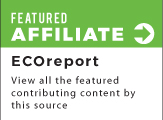

There’s good news from Antarctica, where researchers with tools like ozonesondes — pictured above — have been following the infamous ozone hole as it waxes and wanes over the seasons. The ozone hole has shrunk by 1.5 million square miles – around 4 million square kilometers — and this “healing” trend appears to be continuing.
A major ecological catastrophe has been averted, and we can cite human intervention as the reason. When the globe swept into action with 1987′s Montreal Protocol, which banned a number of substances known to contribute to ozone depletion, it apparently worked.
When scientists first began to observe a hole in the ozone layer over Antarctica, it was a cause for grave concern. Though ozone levels actually fluctuate throughout the year, they perform an important function by blocking the sun’s harmful UV radiation.
Without the ozone layer, Earth would be uninhabitable. Thus, when humans began producing and using compounds that ate away at the ozone layer, like coolants in the CFC class — freon is particularly infamous — they started unwittingly destroying their own habitat.
Getting the nations of the world to collectively agree to the Montreal Protocol was a challenge, but it was extremely important. Without the world on board, some countries would have continued to use substances that would damage the environment.
Even now, we’re learning that compounds previously recognized as safe are actually much more dangerous than we realized, highlighting the importance of ongoing research and regulation.
One unwitting consequence of regulation to eliminate ozone-depleting products has been a rise in those that appear to contribute to climate change, unfortunately.
These scientists didn’t just examine the time of year when the ozone hole is the largest. They also gathered data from September, when the hole first begins to open up as Antarctica starts to see the sun again.
They found that the hole is forming later and later – a very good sign — and it’s smaller.
Continue reading at ENN affliiate, Care2.
Photo credit: NOAA Photo Library
Terms of Use | Privacy Policy
2016©. Copyright Environmental News Network




